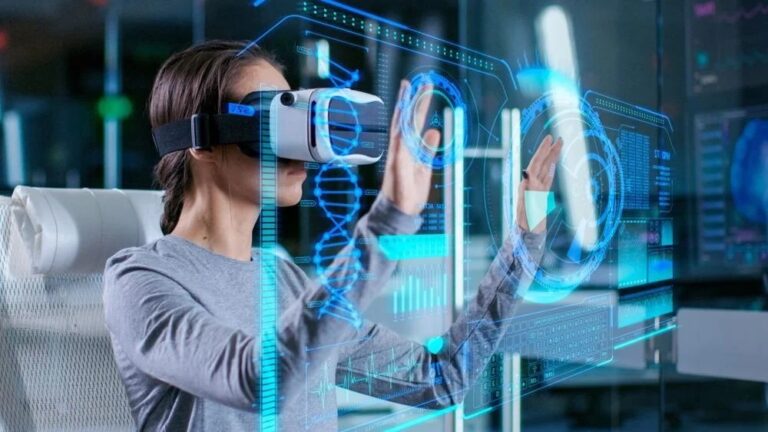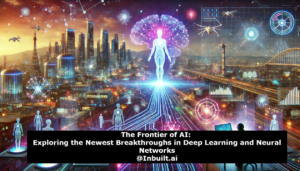As we continue to delve into the capabilities of deep learning, the range of its applications and the depth of its impact become increasingly evident. Here, we explore further areas where deep learning is making a significant difference.
Deep Learning in Environmental Science
- Climate Modeling:
- Weather Prediction: Deep learning models analyze vast amounts of atmospheric data to improve the accuracy of weather forecasts, helping communities prepare for severe weather events.
- Climate Change Analysis: AI examines historical climate data to identify trends and predict future climate changes, providing insights for mitigation and adaptation strategies.
- Wildlife Conservation:
- Species Monitoring: Deep learning algorithms analyze data from camera traps, drones, and satellites to monitor wildlife populations, detect poaching activities, and assess habitat health.
- Biodiversity Assessment: AI helps in assessing biodiversity by analyzing audio, image, and sensor data, contributing to conservation efforts and ecosystem management.
Deep Learning in Humanitarian Aid
- Disaster Response:
- Damage Assessment: Deep learning models analyze satellite and aerial imagery to assess damage after natural disasters, aiding in rapid response and resource allocation.
- Resource Distribution: AI optimizes the distribution of aid and resources by predicting needs and managing logistics, ensuring timely and effective humanitarian interventions.
- Disease Outbreak Management:
- Epidemic Prediction: Deep learning models analyze epidemiological data to predict disease outbreaks and their spread, enabling early intervention and containment measures.
- Healthcare Support: AI assists in the management of healthcare resources and the delivery of medical supplies in affected areas, improving response efficiency and patient outcomes.
Deep Learning in Psychology and Mental Health
- Mental Health Diagnostics:
- Sentiment Analysis: Deep learning models analyze text and speech data to detect signs of mental health issues such as depression, anxiety, and stress, facilitating early diagnosis and intervention.
- Behavioral Monitoring: AI tracks behavioral patterns through wearable devices and mobile apps, providing insights into mental health status and identifying potential risks.
- Therapeutic Interventions:
- Personalized Therapy: Deep learning models recommend personalized therapeutic interventions based on individual patient data, improving treatment outcomes and patient satisfaction.
- Virtual Assistants: AI-powered virtual assistants provide support and counseling to individuals, offering real-time guidance and resources for mental health management.
Deep Learning in Archaeology
- Site Discovery:
- Remote Sensing Analysis: Deep learning models analyze satellite and aerial imagery to identify potential archaeological sites, aiding in the discovery and preservation of historical artifacts.
- Geophysical Surveys: AI processes data from geophysical surveys to detect underground structures and artifacts, enhancing archaeological exploration and excavation.
- Artifact Analysis:
- Pattern Recognition: Deep learning algorithms analyze patterns in artifacts and structures, providing insights into ancient civilizations, cultural practices, and historical events.
- Restoration and Reconstruction: AI assists in the restoration and reconstruction of damaged artifacts and structures, preserving cultural heritage and history.
Deep Learning in Finance
- Algorithmic Trading:
- Market Prediction: Deep learning models analyze financial data, news, and market trends to predict stock prices and market movements, enabling more informed trading decisions.
- Risk Management: AI assesses market risks by analyzing historical data and economic indicators, helping investors and institutions manage portfolios and mitigate potential losses.
- Fraud Detection:
- Transaction Monitoring: Deep learning models analyze transaction data to detect suspicious activities and potential fraud, protecting financial institutions and customers.
- Credit Scoring: AI evaluates creditworthiness by analyzing financial behaviors and transaction histories, providing more accurate and fair credit scoring.
Deep Learning in Public Health
- Epidemiology:
- Disease Tracking: Deep learning models analyze data from various sources to track the spread of infectious diseases, aiding in public health planning and response.
- Health Surveillance: AI monitors public health data to detect trends and outbreaks, enabling timely interventions and resource allocation.
- Healthcare Accessibility:
- Telemedicine: Deep learning models power telemedicine platforms, providing remote diagnostics and consultations, improving healthcare accessibility in underserved areas.
- Health Information Systems: AI enhances health information systems by analyzing patient data, optimizing care delivery, and improving health outcomes.
Deep Learning in Sports
- Performance Analysis:
- Player Tracking: Deep learning models analyze video footage to track player movements, assess performance, and provide insights for coaching and training.
- Injury Prediction: AI predicts potential injuries by analyzing player data, biomechanics, and training loads, helping teams prevent injuries and optimize player health.
- Fan Engagement:
- Content Personalization: Deep learning models analyze fan preferences and behaviors to provide personalized content, enhancing the fan experience and engagement.
- Virtual Reality: AI powers virtual reality experiences, allowing fans to immerse themselves in games and events, creating new ways to experience sports.
Deep Learning in Education
- Personalized Learning:
- Adaptive Learning Systems: Deep learning models power adaptive learning platforms that tailor educational content to individual student needs, improving learning outcomes.
- Predictive Analytics: AI analyzes student data to predict academic performance, identify at-risk students, and provide targeted interventions.
- Educational Content Creation:
- Automated Content Generation: Deep learning models generate educational content, such as quizzes, exercises, and lesson plans, helping educators create diverse and engaging materials.
- Language Learning: AI assists in language learning by providing personalized feedback, pronunciation correction, and interactive exercises, enhancing language acquisition.
Deep Learning in Entertainment
- Content Creation:
- Script Writing: Deep learning models assist in writing scripts for movies, TV shows, and video games by generating dialogue, plot ideas, and character development.
- Music Composition: AI composes original music by analyzing musical styles, patterns, and structures, providing new creative possibilities for artists and composers.
- Audience Analysis:
- Viewer Preferences: Deep learning models analyze viewer data to understand preferences and behaviors, helping content creators and platforms deliver more relevant and engaging content.
- Sentiment Analysis: AI analyzes audience feedback and reviews to gauge sentiment and identify areas for improvement, enhancing content quality and audience satisfaction.
Conclusion
The ever-expanding scope of deep learning demonstrates its potential to transform virtually every aspect of our lives. By harnessing the power of deep learning, we can tackle complex challenges, drive innovation, and create new opportunities across diverse fields. As we continue to explore and develop this technology, it is essential to prioritize ethical considerations, inclusivity, and sustainability to ensure that the benefits of deep learning are accessible to all and contribute to a better, more equitable future.





+ There are no comments
Add yours